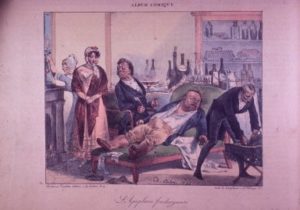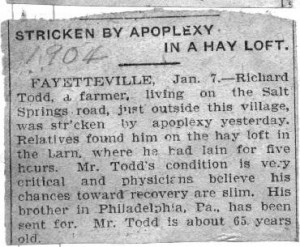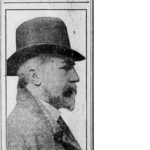Asylum doctors tried hard to share information about the developing field of psychiatry, and sometimes discussed interesting cases in journals. In the January, 1869, issue of the American Journal of Insanity, Dr. Judson Andrews gave details about a fifteen-year-old-boy brought into his asylum.
The progression of his disease follows:
The boy was healthy and free of insanity until he developed typhoid fever and became delirious in April of 1868. He demonstrated mental disturbances by a change in his character, since he began stealing from neighbors’ gardens and hanging around with “evil associates.”
He also became profane, was disobedient to his parents, and danced and sang comic songs. Later, he was hit in the head with a rock thrown by a comrade. The boy was admitted to the asylum that September, and gave no immediate indication of insanity. A few days later, however, he began to do odd things: wash his clothes in a bathtub, eat voraciously, and sometimes vomit food. Otherwise, he was obedient and “anxious to make himself useful.”
In November, he suddenly complained of headache and pain in his stomach, screamed, and passed into a convulsive state. On being examined, he became maniacal for about two hours and then was rational. He complained about a pain in his head, telling the staff that he felt at times “as though he had swallowed tobacco.” At four p.m., he died suddenly.
An autopsy sixteen hours later found a quantity of internal bleeding, and the doctors determined that the boy had died of apoplexy.
Apoplexy originally meant any sudden death after the loss of consciousness, and usually indicated what we would call a stroke, today. Though they doctors involved acknowledged that it was unusual to see apoplexy in one so young, rather than revise the diagnosis of insanity that preceded the event, they believed, instead, that the maniacal fit had simply brought it on.








